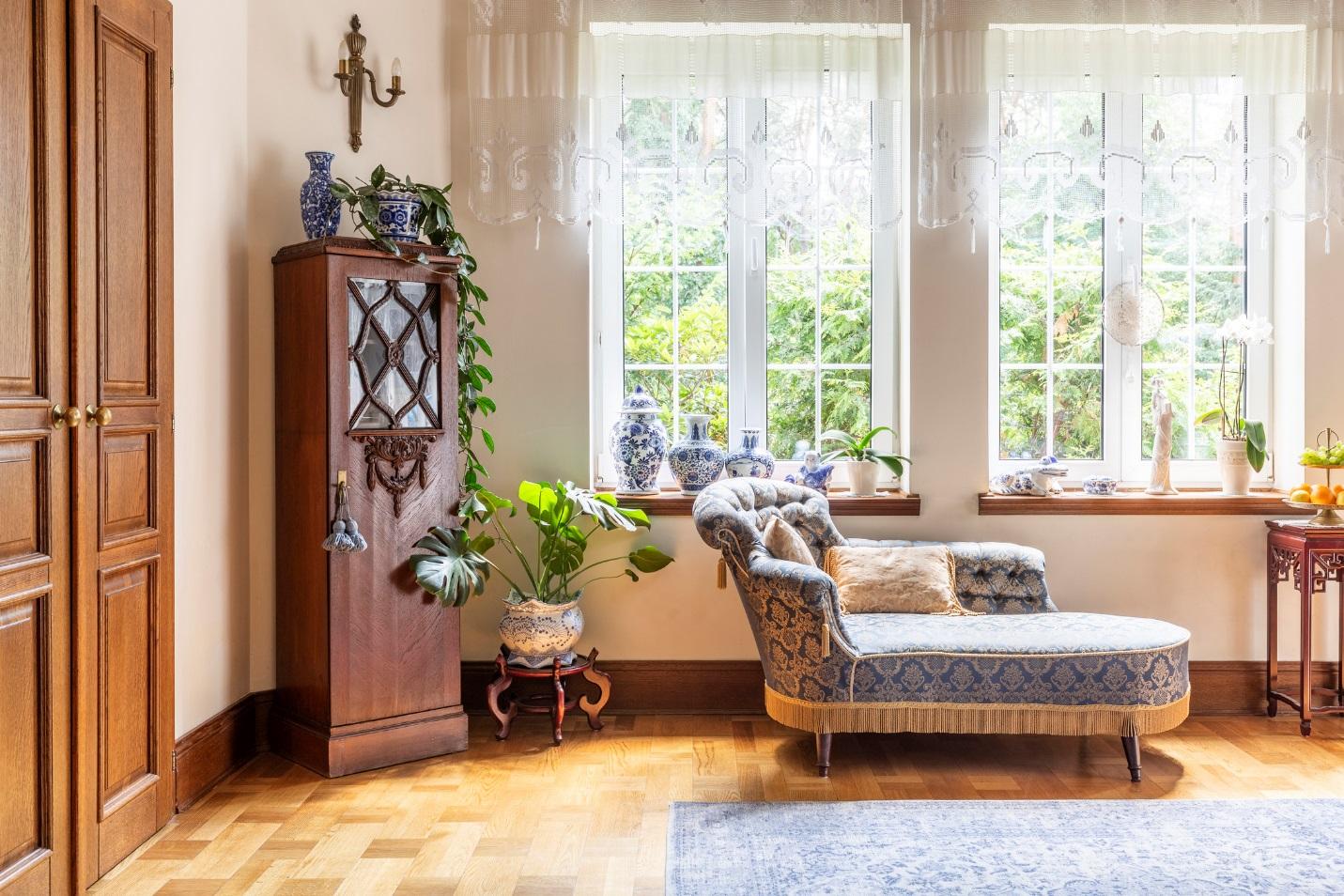
The look of a beautiful piece of antique furniture can elevate your home’s appearance far beyond that of a big box store item. The appearance of antique furniture benefits from the extra care and workmanship that go into its creation as well as the rich history they often have. It’s important to treat your antique furniture with thoughtful maintenance and proper cleanings so that it can stay beautiful and maintain its value when you pass it down to your loved ones or look to sell it. Here is a list of items to keep in mind in order to protect your antique furniture.
Mind Where You Place It
While your hefty antique table or chair may seem sturdy, its wood is incredibly fragile depending on its setting. Do not place your pieces in direct sunlight, because the heat can alter the fine finish of the wood, often leading to fading or discoloration. In addition, the wood will dry out in the intense heat (don’t forget that sunlight coming through a window is much hotter than the regular air!) and lead to fissures or weakening of the glue holding the pieces together.
Consider Investing in a Dehumidifier
There are many health benefits for a dehumidifier but did you know that it can extend the life of your furniture as well? Wood pieces are very susceptible to how moist your air is and are likely to rot or develop mold when the humidity is high. One of the most dangerous effects of high humidity on your furniture is making it more inviting to insects, such as termites, cockroaches, and rats. They often feed on the wood or oil surface residence and leave exit holes, stains, and in severe cases, sometimes permanent infrastructure damage. Keep your moisture at a stable level by using a dehumidifier. Especially as we enter colder weather, this can be crucial in order to protect your antique furniture from excess humidity.
Don’t Throw Out Any Pieces
Unlike mass-manufactured furniture, it’s incredibly hard to find an exact match for an antique replacement. If a piece of wood is chipped off your table or a knob breaks, do not just toss and expect to find another one on Amazon. We recommend keeping it safe and then bringing it to a restorer who can properly re-adhere it.
Use Wax, Not Oil
There are so many commercials that tell owners misleading information. You do not need to put oil on your antique furniture to prevent drying out. It’s often a temporary fix that leads to unwanted buildup and wearing down the finish. We recommend reapplying wax annually to properly protect your antique furniture, but remember that a little bit goes a long way! Always go slowly and make sure to go according to the grain of the wood.
Clean Gently But Thoroughly
We sometimes see homeowners tackle their antique furniture cleaning with materials that are just too harsh for the wood or fabric. We recommend using a soft dampened cloth, such as cheesecloth, that is less likely to scratch or ding your furniture during a regular rag or duster. Also, avoid standard cleaners, such as Pledge, that are likely to leave your surface dirtier with more oil and make it more difficult to properly remove the dust.
Restoration Specialists Can Help Protect Your Antique Furniture
As a rule of thumb, we recommend seeing a restoration specialist to properly maintain your antique pieces. Far too often, we see well-intended but misinformed clients slip up while taking care of their furniture and accidentally damaging it, either with a small dent or even stripping it of its original finish. The luster and aged look of antique furniture are important, so if you need a consultation, make sure to contact Howard’s Upholstery. With over 59 years of experience, we’ll your antique furniture as if it were our own.
















